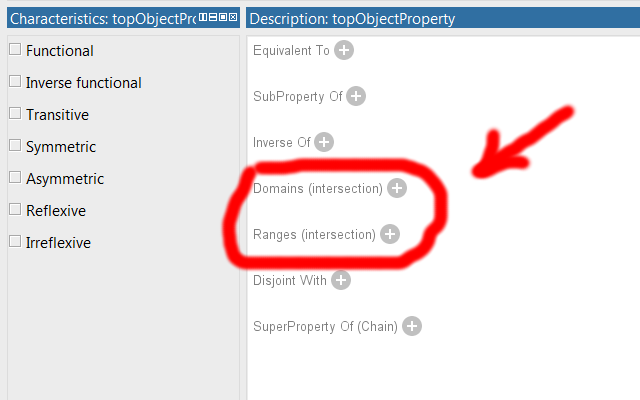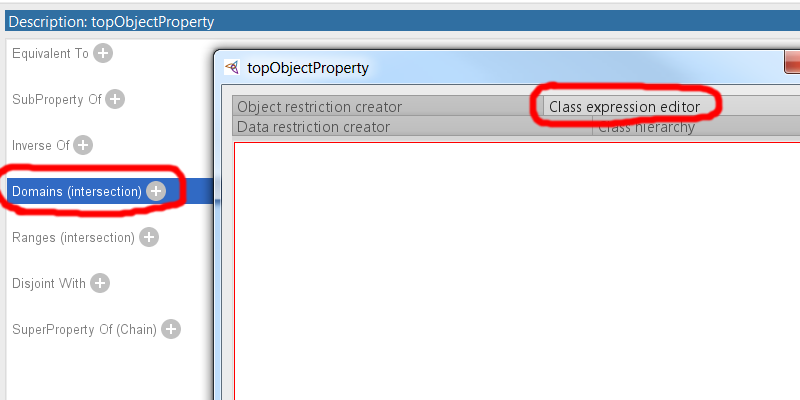I have created an ontology using Protege 5-beta-17. In my ontology I have some classes:
Mountain, Lake, Location etc...
I also have an object property:
hasLocation.
For this object property I have set the range the "Location" class, and the domain the "Mountain" and "Lake" classes.
When I try to view the ontology using the CMap tool it shows that only the
"Mountain" "hasLocation" "Location".
The "Lake" class is presented without the "hasLocation" object property.
Did I do something wrong? Ore do I have do something else in Protege?


